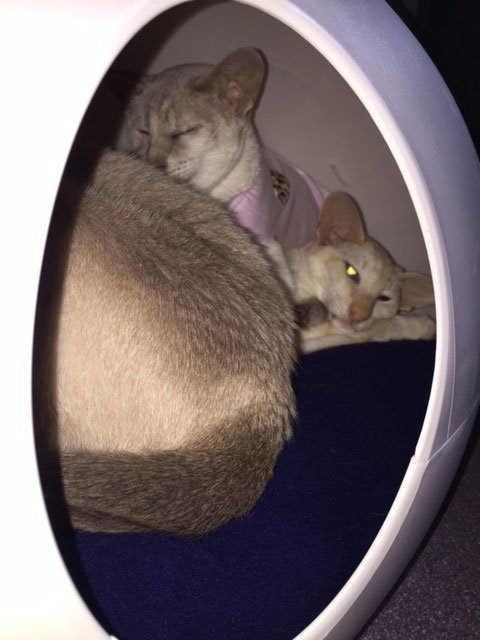The decision has been made. A cat is going to enrich our lives and move in with us. But which house cat is best suited to me? …
Dog cushion for a three-legged dog
The right dog cushion for a dog with a handicap
The joints of an amputee animal are exposed to much greater stress due to the missing leg and the joints can wear out more quickly. This is precisely why the correct and optimal lying position must be the most important criterion for choosing the best dog cushion for a handicapped dog.
Commercially available animal beds are usually made of foam with too low a density, leftover thin polyester fleece or polystyrene balls. As a rule, these dog cushions are much too thin and do not retain their shape sufficiently. This means that the dog is lying on the hard, cold floor within a short time. Especially for a handicapped animal, you need a dog cushion that offers precise support for the joints with the necessary point elasticity.
The pillow inserts from pet-interios are filled with Oeko-Tex Standard 100 certified quality latex flakes which have a very high density. The higher the density, the more stable, elastic and durable the filling is. The very high density of our orthopedic dog pillows also guarantees long-term stability; they remain permanently elastic, dimensionally stable and are therefore long-lasting and sustainable.
The excellent point elasticity of our latex filling optimally reflects the individual body shape of your dog and offers perfect relief and relaxation for the spine and joints. In addition, the latex offers very good springing and recovery properties when the lying position changes and the natural buoyancy of the latex filling provides excellent support for a three-legged dog to get up. The absolutely noise-free filling enables your pet to have a peaceful, restful sleep and ensures optimal relaxation and the necessary regeneration that a handicapped dog in particular needs.
Orthopedic dog cushion for a three-legged dog |Parson Russell Terrier – Lottie
Dog cushion for three-legged dog Lottie
Lottie’s owner wrote us the following enthusiastic email:
About a year ago I bought an orthopedic LOUNGE dog cushion for our three-legged dog Lottie, a Parson Russell Terrier. Lottie loves the dog bed and sleeps very well on it. The support the cushion offers is excellent. Now we want Lottie to sleep just as comfortably in the kitchen and have decided to buy another DIVAN dog cushion. It is a bit lower because Lottie sometimes has problems jumping onto the higher LOUNGE cushion.
The DIVAN Uno dog bed with a head cushion in graphite (80 x 65 cm) arrived this afternoon. Lottie, our Parson Russell Terrier who had to have a leg amputated a few years ago before we adopted him, sometimes has difficulty getting up if the cushion is too soft and springy. It is very important for Lottie to have soft but stable support for her body. And that is what she now has with this orthopedic dog cushion. Within half an hour she had made herself comfortable and she especially loves to bury her little nose under the pillow. It was very difficult to take a nice photo now! To prevent Lottie from rolling into the small gap between the window and the pillow, we closed it with a not so pretty roll.
Thank you for this other excellent dog bed. Our cat Job is already jealous, but she will soon get a nice cat pillow.

Which cat is best suited to me?

Paw Care for Your Dog
The cold season is just around the corner, and paw care for your dog is especially important. …

The dog’s sleeping behavior
Nothing is more calming than watching your dog sleep. Watching his sleeping behavior, how relaxed he is lying in front of you and thinking about what he might be dreaming about. …


















Recent Comments